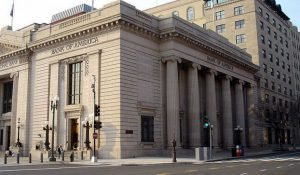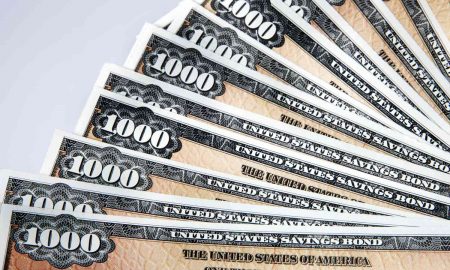
The Consequences of Inappropriate Risks Taken by Banks

Banks are not known to become involved in high-risk ventures and generally leverage their financial risks. Banks are aware that the results of inappropriate risks taken by them can lead to a catastrophe which can result in huge losses and also lead to the closure of the bank. Outstanding banking institutions like J.P. Morgan, Wells Fargo, and numerous other institutions often leverage their risks to avoid the catastrophe spoken about.
Despite the leveraging which is done by banks, it has been noticed that serious losses have been faced by banking institutions during the 80s. Merrill Lynch lost $377 million when they decided to trade in mortgage-backed securities in 1987. The junk-bond market collapsed in 1989 and brought trouble for the Drexel Burnham Lambert which had invested usually in the market for junk bonds. 1989 also witnessed a similar happening in the United Kingdom when the Midland Bank lost £116 million by estimating wrongly on the movements of interest rates.
[su_quote cite=”Josiah Stamp” class=”cust-pagination”]The modern banking system manufactures money out of nothing. [/su_quote]
Losses Recorded In The ’90s Because of Inappropriate Risks By Banks
 The Bank of New England had to make massive provisions for bad debts when it suffered a run on their deposits in 1991 and received support from the government of about $2 billion.
The Bank of New England had to make massive provisions for bad debts when it suffered a run on their deposits in 1991 and received support from the government of about $2 billion.
1992 also witnessed the first-ever loss declared by the Barclays Bank in the United kingdom when it made provisions for bad debts to the tune of £2.5 billion. Credit Lyonnais also faced similar problems and had reported a loss of 6.9 billion French francs, which led the government to order bailouts in 1995.
A couple of dissatisfied customers sued the Bankers Trust for about $200 million in 1995. This litigation was related to the swap contracts that were disastrous, and the bank had organized the contracts for the customers. The claims made by the customers were eventually settled out of courts for a lesser figure.
1996 saw major Japanese banks write off around 6000 billion yen of bad debts, which had been accumulating from the time the Japanese economy was booming.
The Subprime Crisis Also Brought along Major Events
 The subprime crisis wishes a recent topic is well etched into the minds of people along with the happenings during that time. The subprime crisis saw the collapse of Lehman Brothers and the purchase of Merrill Lynch by the Bank of America to keep it from shutting down. The government also had to pay huge sums of money to bail out Freddie Mac and Fannie Mae. A number of financial institutions had to seek assistance from the government in order to remain in business.
The subprime crisis wishes a recent topic is well etched into the minds of people along with the happenings during that time. The subprime crisis saw the collapse of Lehman Brothers and the purchase of Merrill Lynch by the Bank of America to keep it from shutting down. The government also had to pay huge sums of money to bail out Freddie Mac and Fannie Mae. A number of financial institutions had to seek assistance from the government in order to remain in business.
The instances spoken about should give you a proper understanding of risks, especially if you are an investor within the banking sector or are trying to invest your hard-earned money with institutions like these. In all the instances mentioned it must be clarified that the bank did not gamble on the risks by themselves, but they were represented by highly qualified individuals who perhaps made an error of judgment. Fortunately, the governments were willing to bail out the banks and assumed the responsibility appropriately.
The objective of providing this information is not to scare you away from making investments in banks but is just to make you aware that people working in the banks are susceptible to making mistakes. The mistake they make not only hurt the banks or the financial institutions but also cause a number of difficulties to depositors if the governments throughout the country decide not to bail them out.
[su_quote cite=”Lucy Powell” class=”cust-pagination”]There’s a loss of faith in the banking system that for so long has been the backbone of prosperity and growth. [/su_quote]
Apart from serving consumers and advancing loans banks presently are looking to generating additional revenue to reduce their operating costs. Banking has gone past the days when bankers only advanced a limited sum of money after considering the deposits that had been left with them. Presently, it is common to see banks obtaining short-term loans from other financial institutions in order to support lending. They are often involved in lending far in excess of the money deposited them and at times even making investments in high-risk ventures. Some of these investments provide good returns for banks while the others leave them facing the consequences of inappropriate risks taken by banks.
More in Bank Stories
-
Brewing Controversy: Unraveling the Bud Light Boycott
In a world fueled by opinions, the recent Bud Light boycott has stirred quite the commotion. It’s not your typical tale...
December 7, 2023 -
How LVMH Became a $500 Billion Luxury Empire
LVMH Moët Hennessy Louis Vuitton is a name synonymous with luxury and opulence. The brand has crafted not just products but...
December 2, 2023 -
Women Spend 20% More Per Year on Out-of-Pocket Health Costs
A recent report from Deloitte has brought to light a concerning issue in the world of healthcare – women spend a...
November 24, 2023 -
How Sound Baths Can Soothe Your Mind, Body and Soul
Have you ever been so caught up in a song that you felt the world melt away? Music, in its many...
November 18, 2023 -
What to Know Before Rebalancing Your Investment Portfolio
Managing an investment portfolio is akin to steering a ship through ever-changing waters. Periodic adjustments are necessary to ensure you stay...
November 11, 2023 -
Jeff Bezos and Fiancée Lauren Sánchez’s Extravagant $500 Million Superyacht
Get ready to set sail on a journey into the opulent world of Amazon founder Jeff Bezos and his fiancée Lauren...
October 31, 2023 -
How to File Your Taxes: A Comprehensive Guide
Filing your taxes can be daunting, but with the right knowledge and preparation, it doesn’t have to be overwhelming. Taxes are...
October 26, 2023 -
Make Your Kids Mini Master Chefs | Here’s How
For many of us, the kitchen is the heart of our homes – a place where magic happens, one dish at...
October 19, 2023 -
Deciphering Stock Market Sell Signals
In the fast-paced world of stock trading, understanding when to sell your investments is just as crucial as knowing when to...
October 12, 2023















You must be logged in to post a comment Login